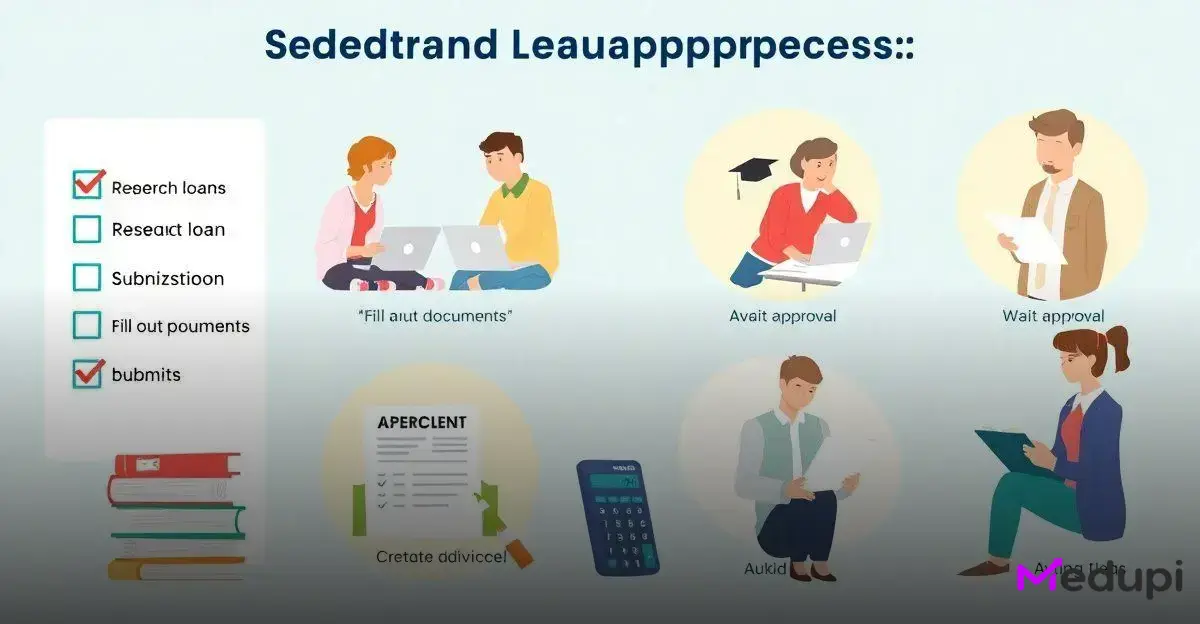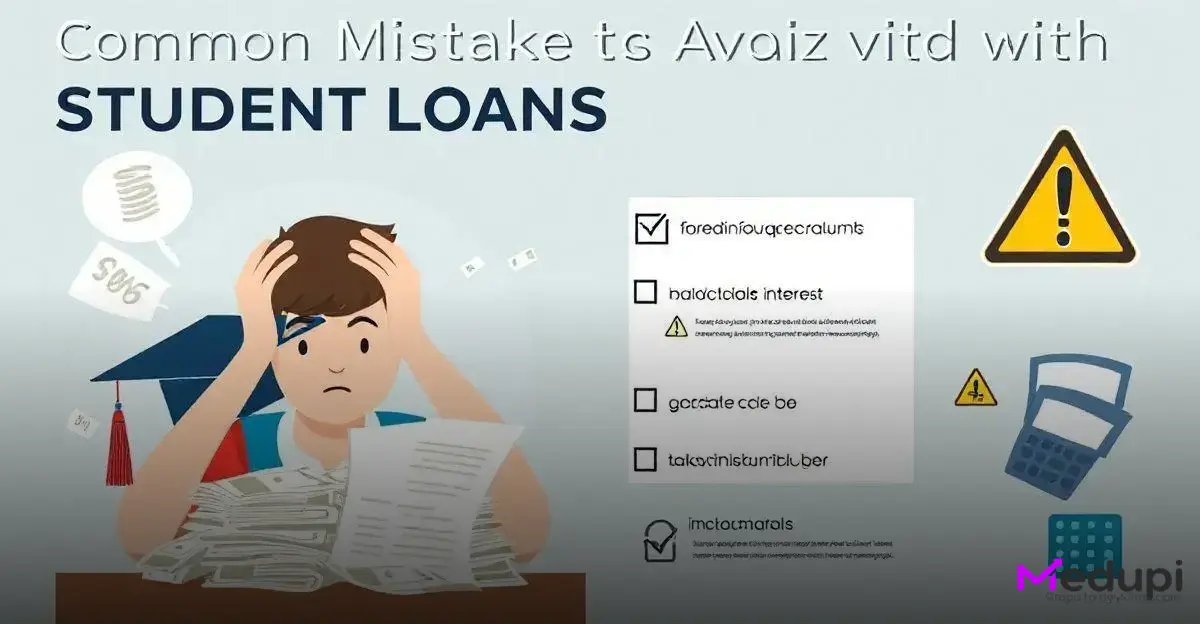ADVERTISEMENT
Student loans are a vital part of financing education for millions of students.
Understanding the complexities of student loans can be overwhelming, yet it is essential for ensuring financial stability post-graduation.
ADVERTISEMENT
Understanding Student Loans: Types and Terms
Understanding student loans is essential for effectively managing education financing. There are several types of student loans, each with unique terms and conditions. Federal student loans often offer lower interest rates and more flexible repayment plans, making them an advantageous choice compared to private loans, which may have higher rates and less favorable terms. Comparing these options carefully is crucial.
The main types of federal student loans include Direct Subsidized Loans, where the government covers the interest while you’re in school, and Direct Unsubsidized Loans, where interest begins to accrue immediately. Recognizing these distinctions can help you make informed borrowing decisions.
ADVERTISEMENT
Additionally, consider PLUS Loans, which are available to graduate students and parents of dependent undergraduate students. These loans can cover the full cost of education but come with higher interest rates. Understanding these differences allows you to choose the best financing option for your needs.
The Application Process for Student Loans Explained

The application process for student loans can seem overwhelming, but understanding it makes it easier. First, you need to complete the Free Application for Federal Student Aid (FAFSA). This form helps determine your eligibility for federal loans and grants. Completing the FAFSA is crucial, as it opens the door to various financial aid options, including subsidized and unsubsidized loans.
After submitting your FAFSA, schools will send you a Financial Aid Offer, detailing the types of aid you qualify for. This offer may include federal loans, work-study opportunities, and scholarships. It’s important to read this information thoroughly to understand what you are accepting.
If you accept federal loans, you will need to complete a MPN (Master Promissory Note). This note states that you agree to repay the loans and outlines the terms. Federal loans typically have fixed interest rates and offer various repayment plans.
For private loans, the application process can vary by lender, with many offering online loans that you can apply for directly through their websites. Be prepared to provide financial information and credit history. Read the terms and conditions carefully, and compare offers from different lenders to find the best rates and repayment options.
Once your loans are approved, keep track of your borrowing and stay aware of your repayment schedule. Good record keeping will ensure you don’t miss important deadlines.
Repayment Plans: Choosing What Works for You
When it comes to repaying student loans, it’s essential to choose a plan that suits your financial situation. There are several types of repayment plans, each designed to help borrowers manage their debt effectively. The most common plans include the Standard Repayment Plan, Graduated Repayment Plan, and Income-Driven Repayment Plans.
The Standard Repayment Plan features fixed monthly payments over a period of ten years. This plan is often the least expensive because it reduces the amount of interest paid over time. Conversely, the Graduated Repayment Plan starts with lower payments that gradually increase every two years, making it ideal for those expecting a salary increase.
For those facing financial challenges, Income-Driven Repayment Plans can offer relief. These plans calculate your monthly payment based on your income and family size, ensuring that payments are manageable. Options include the Pay As You Earn and Revised Pay As You Earn plans, which aim to keep payments at a reasonable percentage of your discretionary income.
It’s vital to review each plan carefully, as they have different terms and implications for total repayment amounts. Additionally, remaining informed about loan forgiveness programs may provide opportunities to reduce the total debt burden. Evaluating your financial situation regularly can help ensure you remain on track to pay off your student loans efficiently.
Common Mistakes to Avoid with Student Loans

When managing student loans, avoiding common mistakes is essential for financial success. One major mistake is not understanding the terms of your loans. Each loan can have different interest rates, repayment terms, and conditions. Knowing these details helps you plan your repayment strategy.
Another common pitfall is missing payments. Missing even one payment can damage your credit score and lead to additional fees, so it’s crucial to stay organized.
Another issue is failing to utilize repayment options. Many borrowers are unaware of the various plans, like Income-Driven Repayment Plans, which could significantly lower monthly payments based on your income. Additionally, not applying for loan forgiveness programs can be a missed opportunity for many borrowers in public service jobs.
Borrowers often underestimate their student loan amount, leading to unexpected financial strain after graduation. It’s essential to track total debt throughout your education to prepare for repayment.
Finally, avoid taking out more loans than necessary. Be mindful of borrowing, and only take what you need to cover tuition and essentials.
Resources for Managing Student Loans Effectively
Managing student loans effectively requires access to the right resources. Many borrowers find themselves overwhelmed, but many tools can help. First, consider using the Federal Student Aid website. This site offers comprehensive information on federal loans, repayment plans, and even loan forgiveness programs.
Another valuable resource is your loan servicer. They provide guidance on your specific loans, payment options, and any potential changes in terms. It’s essential to communicate regularly with them to stay informed about your options.
Financial literacy programs can also be beneficial. These programs educate borrowers on budgeting, credit management, and understanding loans. Many nonprofit organizations offer free workshops and online courses designed to help you manage your student debt effectively.
Additionally, consider using budgeting apps that can help track your expenses and manage loan payments. Apps like Mint or YNAB (You Need A Budget) can assist you in organizing your finances more efficiently.
Lastly, stay informed about legislative changes that could affect your loans. Websites like NASFAA (National Association of Student Financial Aid Administrators) and educational blogs can provide updates on policies that may benefit borrowers.
Navigating Student Loans Wisely
Navigating student loans can be challenging, but understanding your options is key. By taking the time to learn about different types of loans, utilizing available resources, and avoiding common pitfalls, you can manage your debt effectively.
Choosing the right repayment plan tailored to your financial situation is crucial. Remember, it’s important to stay informed about legislation that may impact your loans and to communicate with your loan servicer regularly.
Utilizing financial literacy programs and budgeting tools can provide significant help on your journey to successful loan repayment. With the right approach, you can achieve financial stability and focus on your goals post-graduation.





